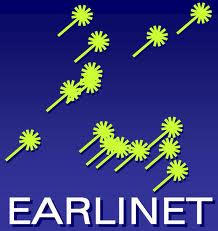

EARLINET – ASOS
EARLINET-ASOS (Advanced Sustainable Observation System) is a 5-year EC project, which started on 1 March 2006.
EARLINET, the European Aerosol Research Lidar Network, is the first aerosol lidar network, established in 2000, with the main goal to provide a comprehensive, quantitative, and statistically significant data base for the aerosol distribution on a continental scale. On March 2006, the EC Project EARLINET-ASOS started on the base of the EARLINET infrastructure. It will contribute to the improvement of continuing observations and methodological developments that are urgently needed to provide the multi-year continental scale data set necessary to assess the impact of aerosols on the European and global environment and to support future satellite missions.
The main objective is the improvement of the EARLINET infrastructure, resulting in a better spatial and temporal coverage of the observations, continuous quality control for the complete observation system, and fast availability of standardised data products.
The main objectives of the EARLINET-ASOS project are:
– to extend the development of the European Aerosol Research Lidar Network as a world-leading instrument for the observation of the 4-dimensional spatio-temporal distribution of aerosols on a continental scale, resulting in accurate, well-defined, and easily accessible data products for use in science and environmental services.
– to enhance the operation of the network to foster aerosol-related process studies, validation of satellite sensors, model development and validation, assimilation of aerosol data into operational models, and to build a comprehensive climatology of the aerosol distribution.
This will be reached through the several activities to be carried out in the frame of the project:
Quality assurance The quality assurance program will be implemented by defining standardised tools for internal quality checks at both instrument and inversion algorithm levels, by providing assistance to the participating stations to apply these tools to their instruments and procedures, and by compiling the different system and subsystems setups at individual stations. This activity will ensure that the data products provided by the individual stations are permanently of highest possible quality according to common standards and are thus usable by the research community in a homogenous manner. Optimization of instruments Starting from individual solutions found at the different partner stations, an optimal approach to the instrumentation both at the system and at the subsystem level will be defined. Emphasis will be made on automation, for extended temporal coverage, and standardization, for improved interoperability in future networks. Optimization of data processing The main objective of this activity is to provide a common single processing chain for the evaluation of lidar data, from raw signals to final products. Raw signals may come from different types of system, final products are profiles of optical properties like backscatter and extinction and, as far as instrument properties permit, microphysical properties. This activity will have a strong impact on the scientific community because data with homogeneous well characterized quality will be made available in near real time, permitting studies of important events in a timely way and permitting comparative studies between different regions. Database construction and operation The aim is building a common database that is automatically and continuously updated through a software system which collects the data products provided by the individual stations and makes them available to the community; in addition to the continuously updated quality-controlled lidar data, the database will include auxiliary data allowing to search for data meeting specified criteria. It will be accessible through a web-based interface to provide easy access to data products for internal and external users.